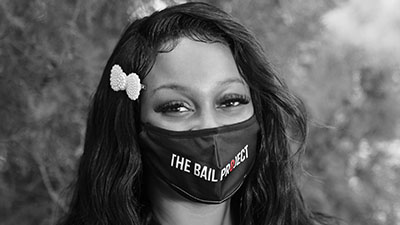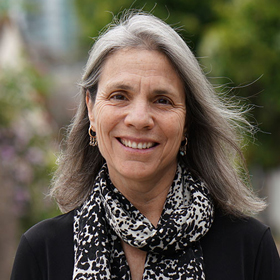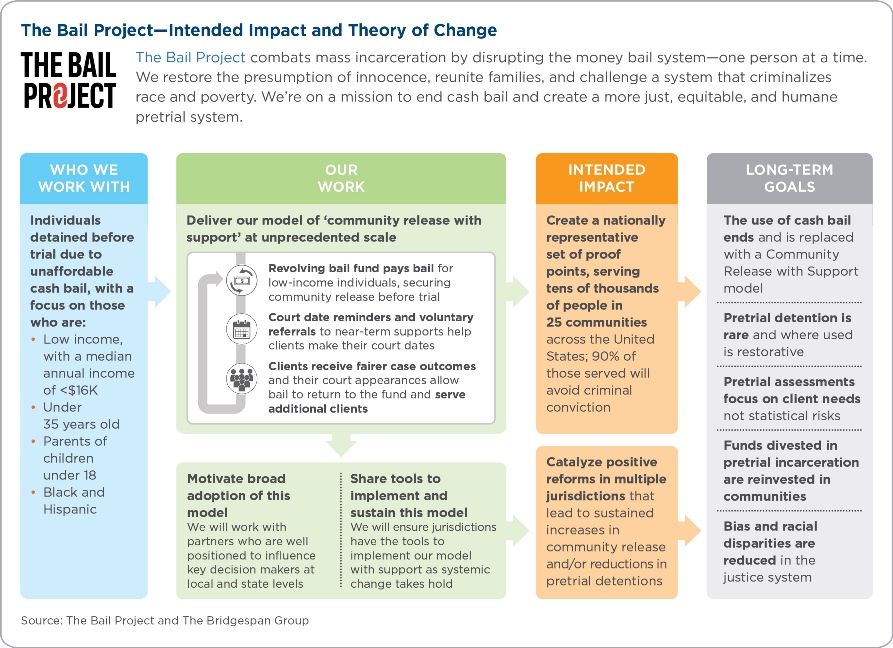Many organizations conduct a mix of direct service and advocacy work. The relationship between these two distinct areas of work may take different forms. For example, some organizations may engage in advocacy to enable the success of their direct service work. Others may aim to use the results of their direct services as compelling proof points to inform advocacy work for systemic changes in policy or practice.
For more on intended impact and theory of change see our collection of case studies, articles, and tools on the topic.
When these types of organizations develop or refresh their intended impacts and theories of change, it is often helpful to identify impact goals associated with each area of work, given that direct services and advocacy typically involve different activities and different measures of success. In addition, organizations should aim to clarify how their direct service and advocacy efforts link to each other and why each is needed to achieve the overall impact they aspire to.
As with organizations focused mainly on advocacy, hybrid organizations that combine advocacy and direct service need to adapt to challenges and opportunities in the external environment by balancing the need to stay focused on strategy with flexibility in implementation.
Just because an organization does some advocacy work does not necessarily mean advocacy should be an explicit part of its intended impact and theory of change. We typically only find it useful if the organization is investing significant resources in advocacy and holding itself accountable for those results.
The Bail Project
Overview
Mission: The Bail Project combats mass incarceration by disrupting the money bail system—one person at a time. We restore the presumption of innocence, reunite families, and challenge a system that criminalizes race and poverty. We’re on a mission to end cash bail and create a more just, equitable, and humane pretrial system.
Intended Impact: Over the next five years, The Bail Project will post bail for tens of thousands of the poorest members of our society—who are also disproportionately people of color—within 25 communities that are geographically, demographically, and politically diverse. The Bail Project will create a nationally representative set of proof points to show that cash bail is not required to ensure appearance in court. These efforts will advance The Bail Project’s long-term advocacy goal to change national norms so that decision makers opt for “community release with support” models instead of setting unaffordable cash bail that results in unnecessary detention and incarceration.
Theory of Change: Drawing on data from our direct service experiences, we will demonstrate that our model of community release with support works across diverse settings. Our data will demonstrate that our model yields high rates of court return, results in fairer case outcomes without negatively affecting overall public safety, and leads to cost savings within jurisdictions. Armed with this data, we will motivate broad adoption of our Community Release with Support model by working directly with partners and key decision makers at local and state levels to enact systemic policy change. In parallel, we will work to ensure jurisdictions have the tools to implement and sustain our model of community release with support as systemic change takes hold.
Founding year: 2017
Revenue: $15 million (2018 fiscal year)
Field: Criminal Justice
Geography/footprint: United States
Website: https://bailproject.org/

(Photo credit: The Bail Project)
The Bail Project’s founder and CEO Robin Steinberg reflects on a few of the challenges and breakthroughs the organization experienced as it refined its theory of change to support a large nationwide scaling effort.

You have to get the direct services right to understand the policies you want to advance. For us, this meant connecting our direct services work (i.e., pretrial bail, community release with support) and advocacy agenda (i.e., eliminating pretrial detention except where absolutely necessary to prevent imminent violence or willful flight; and combating the racial bias that pervades every corner of the American legal system and reinforces inequality). Developing our theory of change helped us clarify our direct service model, better understand our role in the ecosystem of criminal justice and bail reform, and identify where we can have the most impact.
Our sites need to serve as proof points for national change. This has meant ensuring the model we’re advocating for and implementing across the nation has elements that are replicable and useful in other jurisdictions. We also have had to be strategic about which sites we wanted to be in. Criminal justice is so local—you can’t just pick a few sites and assume they’ll make your case and prove your theory of change. So for us, it was really important to be clear about our criteria for choosing sites. For example, we need to have a balance of Republican- and Democratic-leaning areas, so we can show that reform can happen in both red and blue states.
Balancing the need to stay focused on strategy with flexibility in implementation
One of the things we’ve tried to do is to be flexible and nimble. As an early-stage organization, we faced a lot of unknowns. First, there’s the dynamic nature of the criminal justice system in the US and the public attitudes about it. Second, there was limited and inaccurate data about what was going on in the sites we were considering entering. Our scaling plan sought to evolve with the changing landscape at the local level while providing an overall structure to stay on strategy.
Instead of locking in specific sites, our intended impact was more general (i.e., “25 communities that are geographically, demographically, and politically diverse”) and then we developed a set of criteria to guide our site selection over time. These criteria include considerations like how the jurisdiction approaches forfeitures and what the appetite is for bail reform there. We committed to monitoring the criminal justice landscape closely, so we could spot and take advantage of strategic opportunities to enter new geographies. And rather than be rigid about our model, we developed a learning agenda for our direct service work and built in opportunities for learning and innovation.
One example of how we’ve been flexible came with COVID-19. We know that jails have been some of the largest single sources of infections in the country. Seeing a ripe moment for change, we supported advocacy efforts to get people out of jail quickly. As jurisdictions began to resume regular court operations, we developed policy recommendations and an approach to ensuring courts adopt or maintain policies that will help reduce COVID-19 transmission and facilitate fair and effective resolution of criminal cases. For example, we recommended releasing more people on personal recognizance and waiving the need for appearances for non-essential court hearings.
Developing the capabilities required to deliver on the theory of change
To execute successfully against our newly articulated theory of change and achieve our intended impact, we knew two capabilities would be especially important. First, we needed to improve our capacity for measurement and evaluation. This is critical to our ability to demonstrate that our model works. Second, we needed to ensure that we had the right teams in place. Specifically, our sites would need to be led by people who have been involved in racial and social justice movements in their own communities. Their experience and relative proximity to the issues we’re trying to address would be critical to getting results. And it would help us develop strong relationships with the local partners and communities with whom we work. Alongside our team of local leaders, we built a national support hub comprised of operations, policy, communications, and data experts to support quality programming, connect our direct services work to our advocacy goals and keep The Bail Project aligned to a cohesive strategy as we scaled. This combination of reviewing real-time data to measure our progress in building proof points for systemic change while developing teams committed to connecting local context to a national vision have both been essential in advancing our advocacy strategy and impact.


